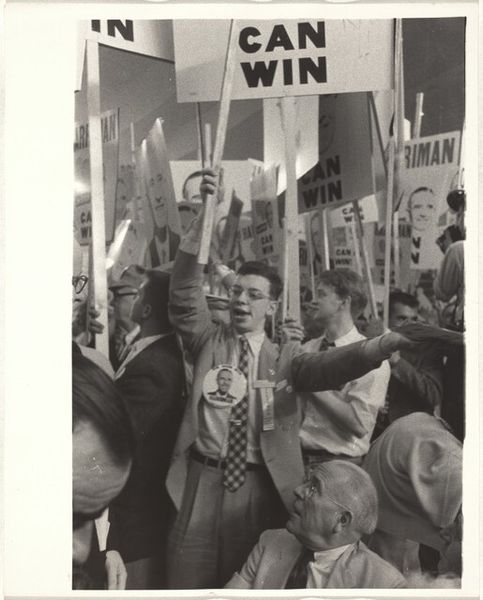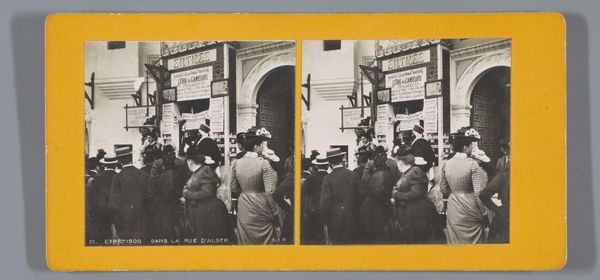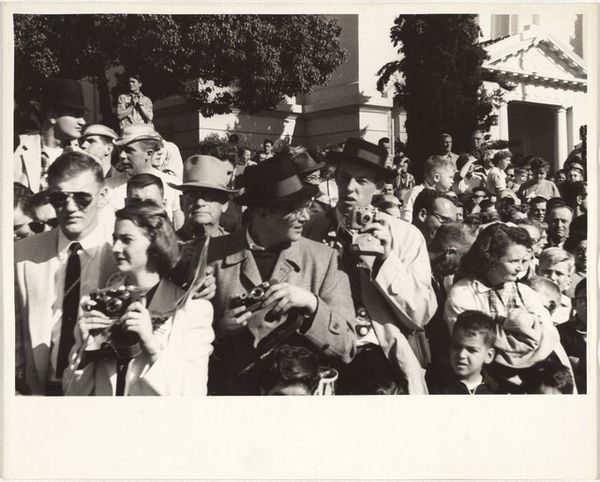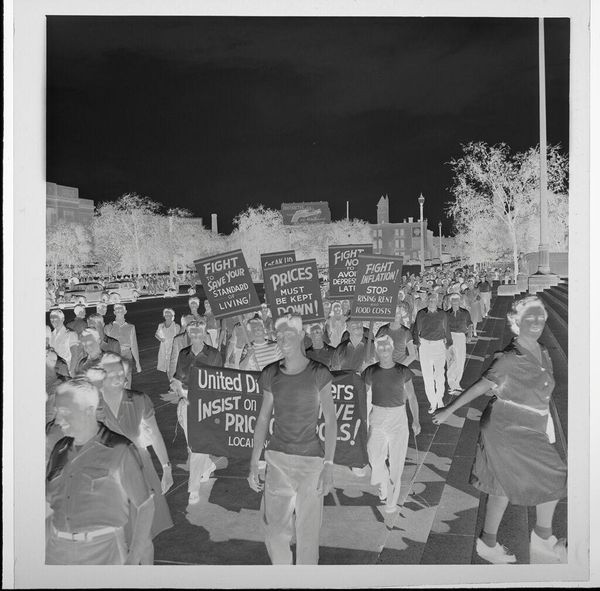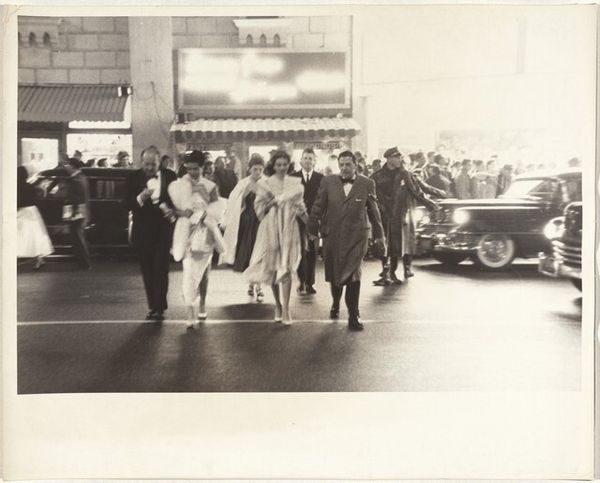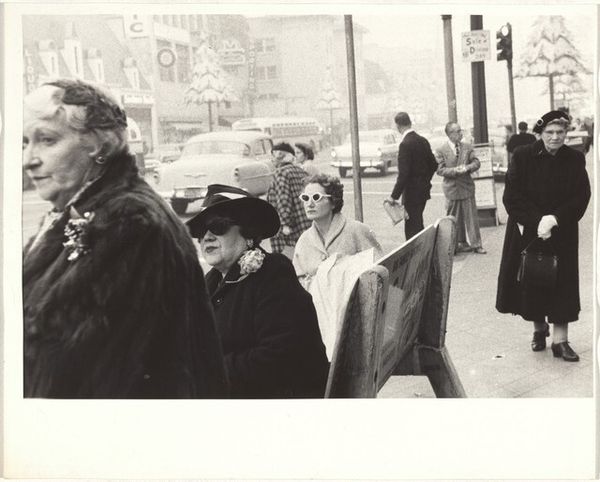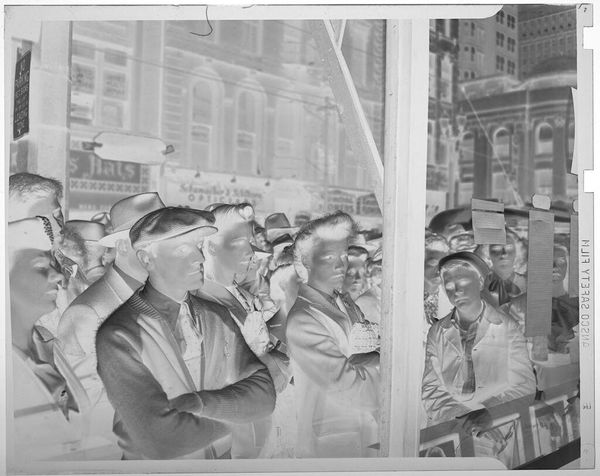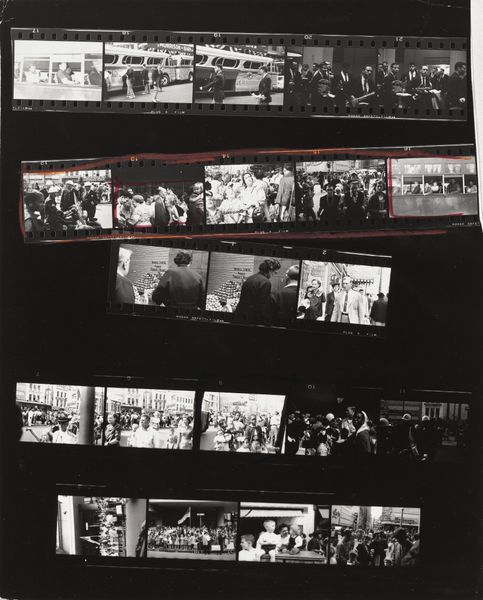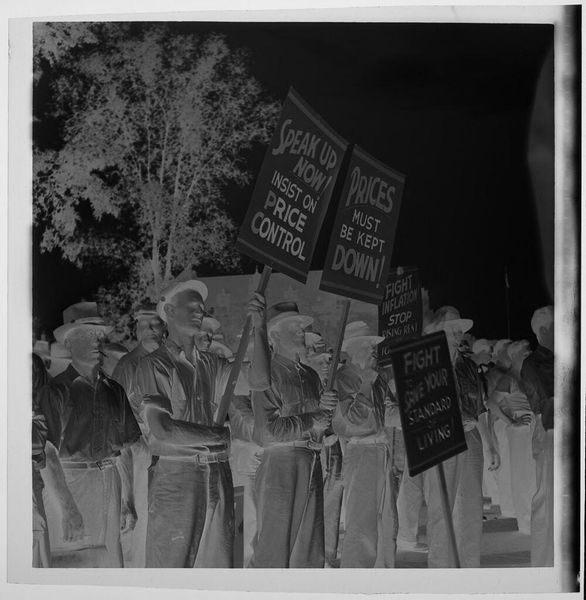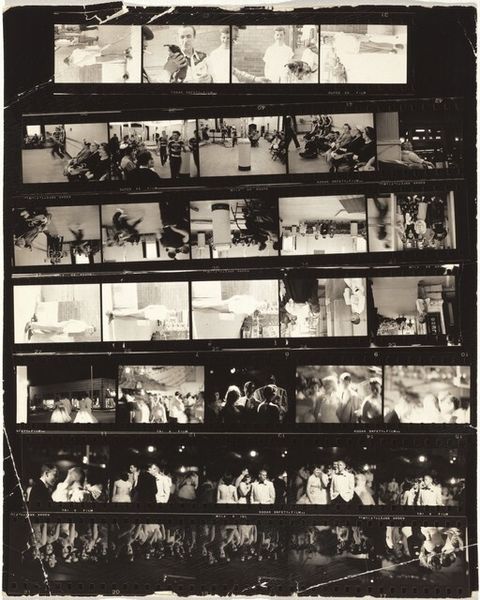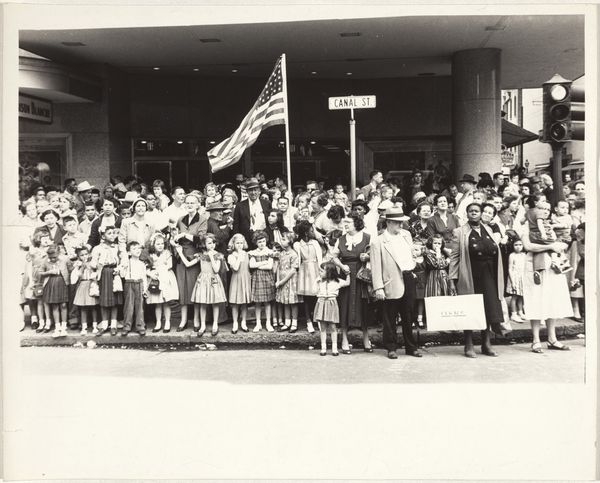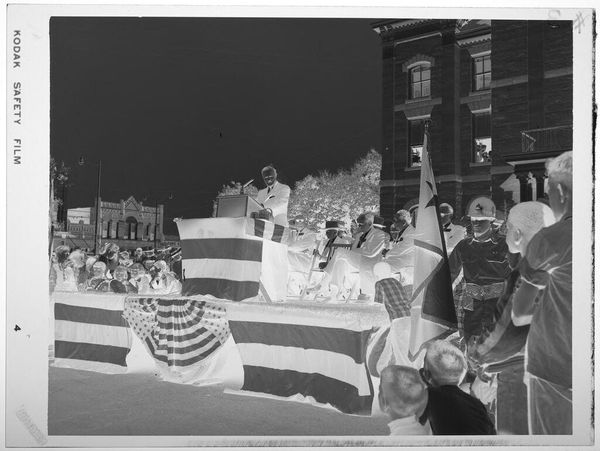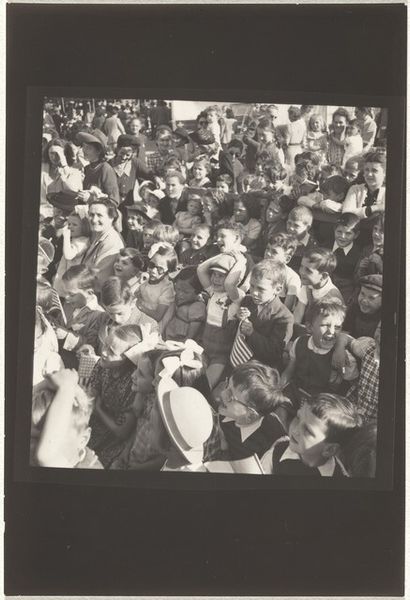
print, photography, gelatin-silver-print
#
portrait
# print
#
street-photography
#
photography
#
historical photography
#
gelatin-silver-print
#
modernism
#
realism
Dimensions: sheet: 20.2 x 25.2 cm (7 15/16 x 9 15/16 in.)
Copyright: National Gallery of Art: CC0 1.0
Curator: This is Robert Frank's gelatin silver print, "Street scene, convention--Chicago," created in 1956. Editor: It strikes me as quite chaotic, almost frenetic, in its energy. The high contrast emphasizes the textures of the signs and the varied expressions of the people. Curator: The picture's social context is key. It's capturing a political moment, probably at the Democratic National Convention held in Chicago that year. Consider Frank's choice of a small, portable 35mm Leica camera. It allowed him to be in the thick of the crowd. Editor: Exactly. And the image is full of symbols of Americana. Look at that partial "Route 66" sign nestled between placards! It speaks volumes about postwar American mobility, yet it is being overshadowed by slogans and celebrity. Curator: We cannot overlook Frank’s hand in shaping our understanding of that era. These aren’t staged, perfectly lit portraits. They reveal grit, and he captures them on readily available silver gelatin. What meanings can we discern, then, from his decision to portray a political rally in this off-kilter manner? Editor: It makes me think about the individual lost within the crowd. Each of these figures probably held particular convictions, yet they become, en masse, an amorphous force of optimism for their candidate, like their agency as individuals dissolves. The image's imperfections highlight this sense of fractured meaning. Curator: The image certainly challenges idealized portrayals, prompting us to reflect on labor, political consumption, and the individual's place within collective movements. Editor: Ultimately, "Street scene, convention--Chicago" distills a sense of fractured unity, leaving me to ponder the symbols that still shape our sense of belonging in America. Curator: I find myself thinking of Frank's role. He provides an unfiltered perspective on that period, made accessible because he favored ready-made materials that allowed mobility and an unfettered freedom to capture.
Comments
No comments
Be the first to comment and join the conversation on the ultimate creative platform.
